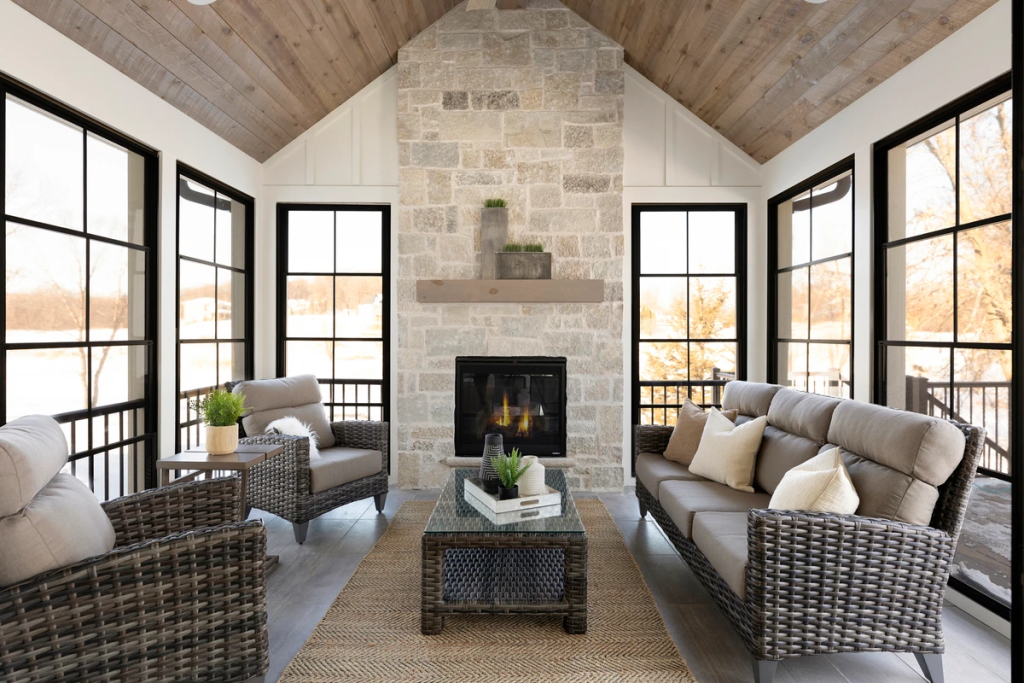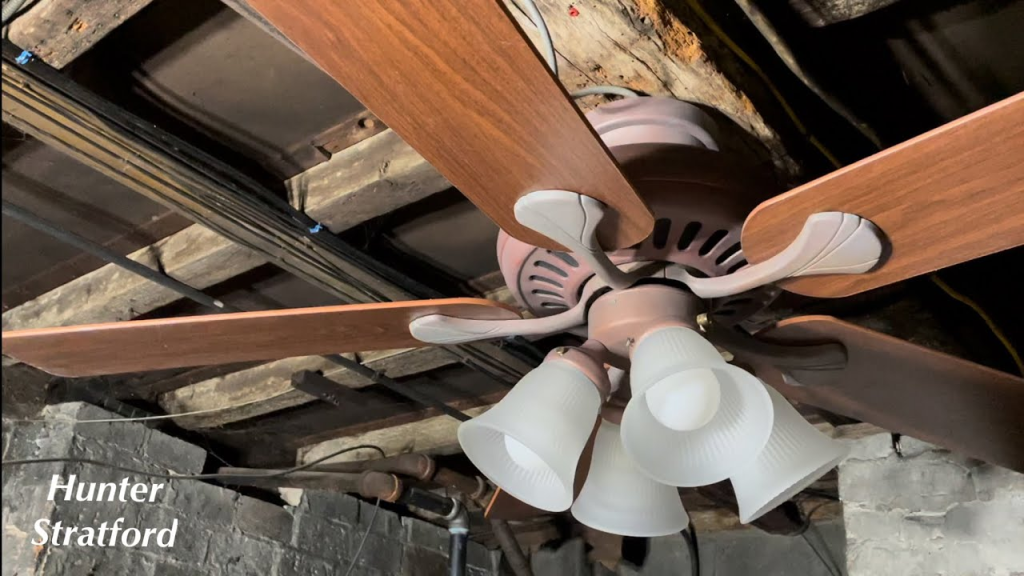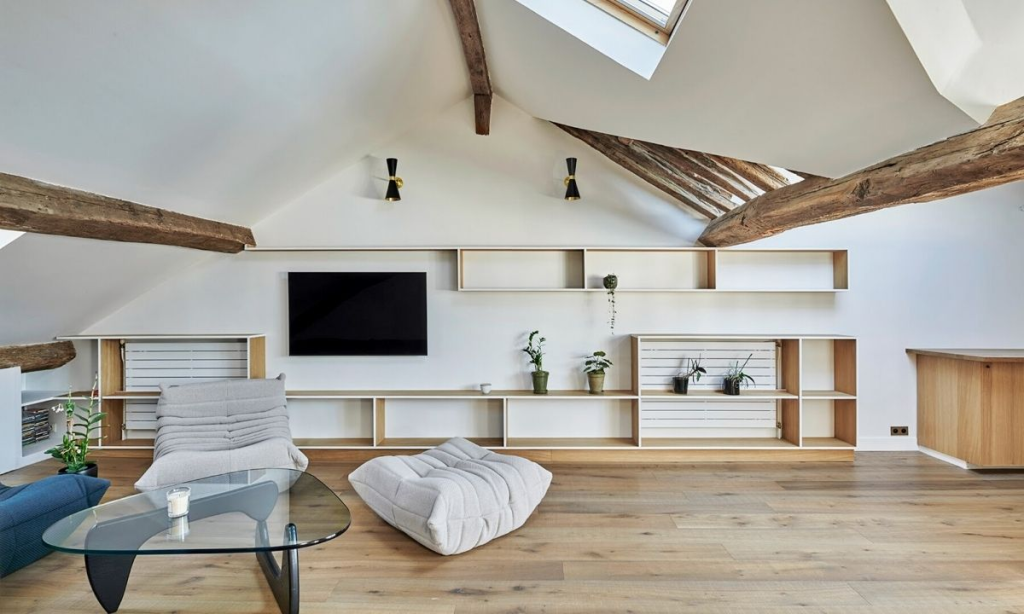When it comes to creating a stunning focal point in your home, few features can compare to a beautifully designed fireplace, especially when set against a vaulted ceiling. The combination of a vaulted ceiling and a fireplace can create a dramatic effect, enhancing both the aesthetic appeal and the ambiance of your living space. In this article, we will explore various vaulted ceiling fireplace ideas that not only showcase the elegance of your home but also provide warmth and comfort.

Understanding Vaulted Ceilings and Their Benefits
Before diving into specific vaulted ceiling fireplace ideas, it’s essential to understand what vaulted ceilings are and why they have become a popular choice in modern home design.
What is a Vaulted Ceiling?
A vaulted ceiling is characterized by its upwardly arching design, which can create the illusion of a larger space. This architectural feature often includes angles that lead to a peak or a dome shape, giving rooms an airy and open feel.
Benefits of Vaulted Ceilings
- Enhanced Space: Vaulted ceilings make a room feel larger and more expansive, drawing the eye upward and providing a sense of openness.
- Natural Light: The height and angles of vaulted ceilings allow for larger windows or skylights, flooding the space with natural light.
- Aesthetic Appeal: The unique design adds character and charm to any room, making it more inviting and visually interesting.
- Improved Airflow: The elevation can help with air circulation, keeping the space cooler in the summer and warmer in the winter.
Vaulted Ceiling Fireplace Ideas: Creating a Focal Point
When you have a vaulted ceiling, incorporating a fireplace can create a stunning focal point that draws attention and enhances the overall design of the room. Here are some creative ideas for your fireplace in a space with a vaulted ceiling.
Read too: Kitchen Lighting For A Vaulted Ceiling: Illuminating Your Space with Style and Functionality
1. Floor-to-Ceiling Stone or Brick Fireplace
One of the most impactful vaulted ceiling fireplace ideas is to extend the fireplace from the floor to the ceiling. This design creates a dramatic statement and adds texture to the room. A stone or brick fireplace provides a rustic yet elegant touch and complements the height of the ceiling beautifully.
Key Features:
- Use natural materials like stone or reclaimed brick.
- Incorporate a wooden mantel at eye level for added warmth.
- Choose a modern or traditional style depending on your decor.
2. Contemporary Linear Fireplace
For a sleek, modern look, consider a linear fireplace that stretches horizontally across the wall. This minimalist design works exceptionally well with vaulted ceilings, allowing the architecture to shine without overwhelming the space.
Key Features:
- Opt for a fireplace with a glass front for a clean appearance.
- Use bold colors or finishes to make a statement.
- Incorporate built-in shelving on either side for added storage and decor.
3. Classic Wood-Burning Fireplace with a Dramatic Mantel
A classic wood-burning fireplace can bring warmth and a sense of nostalgia to your space. Pair it with a dramatic mantel that reaches up to the peak of the vaulted ceiling for a timeless look.
Key Features:
- Choose a richly stained wood for the mantel to add contrast.
- Incorporate decorative elements on the mantel, such as art, candles, or family photos.
- Ensure the fireplace is functional and meets local safety codes.
4. Suspended Fireplace
A suspended fireplace is a unique and eye-catching option for a room with a vaulted ceiling. This type of fireplace hangs from the ceiling, creating a sense of drama and intrigue.
Key Features:
- Look for a design that complements the angles of the ceiling.
- Choose a modern, metallic finish for a contemporary feel.
- Ensure proper ventilation and safety measures are in place.
5. Fireplace with Built-in Seating
Incorporate a cozy seating area around your fireplace to create an inviting atmosphere. This design can be especially effective in a room with a vaulted ceiling, making the space feel warm and welcoming.
Key Features:
- Design built-in benches or seating that follows the lines of the fireplace.
- Use cushions and throws to enhance comfort and style.
- Consider adding a small coffee table for functionality.
Decorating Around Your Vaulted Ceiling Fireplace
Once you’ve selected your ideal fireplace design, it’s time to consider how to decorate the surrounding area to complement the vaulted ceiling fireplace.
1. Artwork Above the Fireplace
Utilizing the vertical space above the fireplace can draw the eye upward and highlight the height of the vaulted ceiling. Choose large-scale artwork or a series of smaller pieces arranged in an eye-catching gallery wall.
2. Layered Lighting
Incorporate layered lighting to enhance the ambiance around your fireplace. Consider pendant lights that hang down from the vaulted ceiling, wall sconces flanking the fireplace, and table lamps on side tables.
3. Textured Rugs and Throws
Add warmth and comfort to the space with textured rugs and throws. A plush area rug can define the seating area, while throws can enhance the coziness of the space.
4. Natural Elements
Incorporate natural elements such as plants, wood, and stone to bring the outdoors inside. Consider placing potted plants on the mantel or using natural wood furniture that complements the design of the fireplace.
Functional Considerations for Your Vaulted Ceiling Fireplace
When designing your vaulted ceiling fireplace, it’s essential to keep functionality in mind. Here are some important aspects to consider:
1. Ventilation and Safety
Ensure that your fireplace meets local safety codes and is properly ventilated. This is especially important for wood-burning fireplaces to prevent smoke buildup and ensure proper air quality.
2. Heat Distribution
Vaulted ceilings can sometimes lead to uneven heat distribution. Consider installing ceiling fans to help circulate warm air, or choose a fireplace design that effectively radiates heat throughout the room.
3. Maintenance
Regular maintenance is essential for keeping your fireplace in good working order. Schedule annual inspections for wood-burning fireplaces and clean the chimney to prevent soot buildup.
4. Accessibility
Make sure that the fireplace is easily accessible for both use and maintenance. Consider the layout of the room to ensure that there is enough space for furniture and movement around the fireplace.
Conclusion: Transforming Your Space with Vaulted Ceiling Fireplace Ideas
Incorporating a fireplace into a room with a vaulted ceiling can transform the space into a warm, inviting retreat. With a variety of vaulted ceiling fireplace ideas to choose from, you can create a stunning focal point that enhances both the functionality and aesthetics of your home. Whether you opt for a floor-to-ceiling stone design, a modern linear fireplace, or a cozy wood-burning option, the right fireplace can elevate your living space.
As you explore different designs and decorating ideas, remember to consider the overall style of your home, your functional needs, and the unique characteristics of your vaulted ceiling. With careful planning and creativity, you can create a beautiful and inviting atmosphere that showcases the elegance of your home while providing warmth and comfort.


















